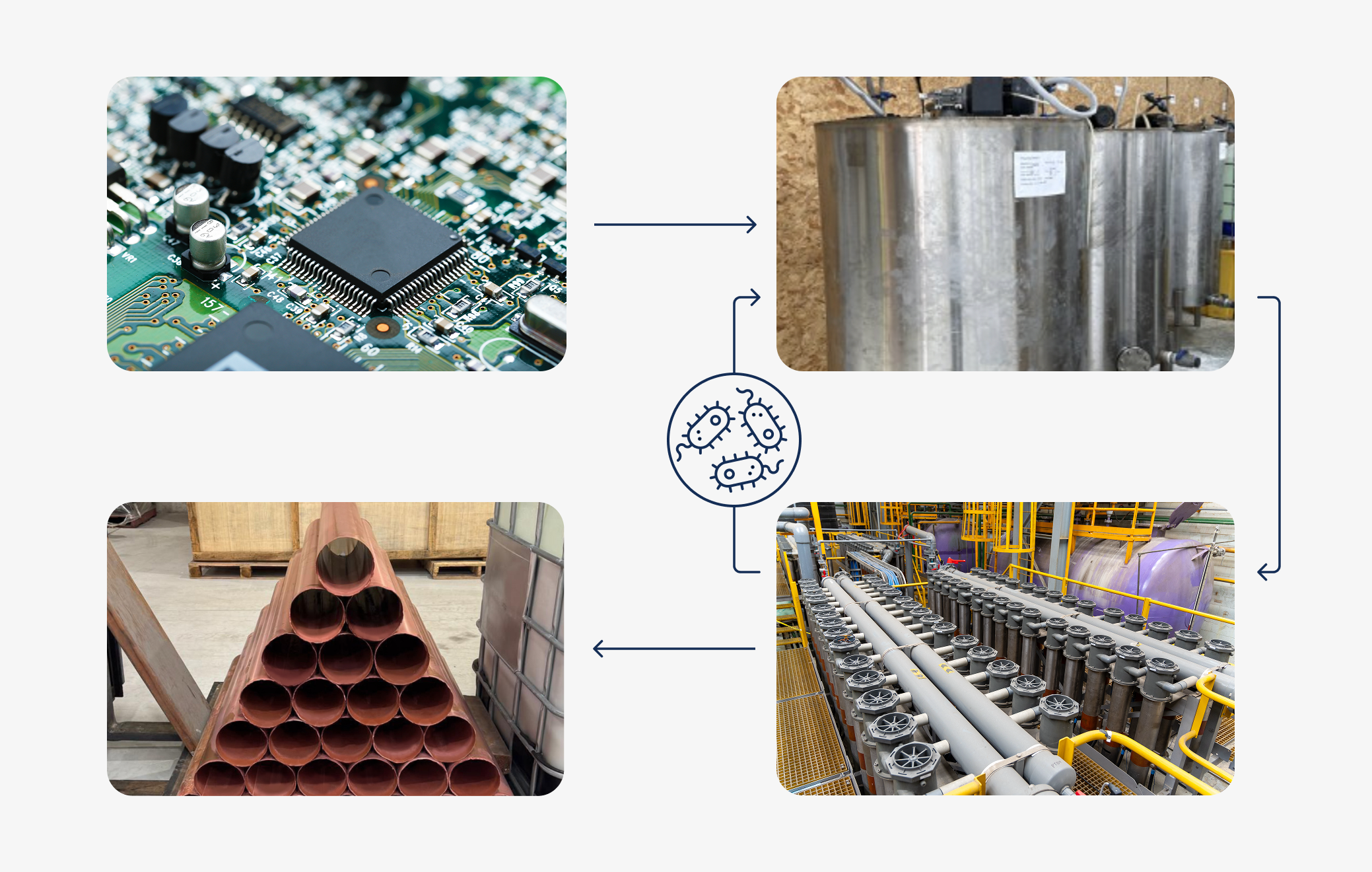Objectives of advanced green technologies
Advanced green technologies (AGTs) refer to a group of practical methodologies and materials based, among others, on non-toxic chemical processes, clean energies, and environmental monitoring to slow down or correct the negative impact induced by human activities. Advanced green technologies are aimed to provide better sustainability through securing our societal needs without further damaging or depleting the remaining natural resources. This could be achieved through:
- Recycling of manufactured goods and products.
- Decreasing waste and pollution by improving the behavior of human production and consumption.
- Development of clean alternative technologies and energies to replace those proven to negatively impact health and pollute the environment.
- Set up economical models to implement and commercialize related innovations by encouraging the creation of jobs and novel careers in the field.

Application fields of Advanced Green Technologies
Today, AGTs are implemented in a variety of fields ranging from energy to cleaning the environment.
- Energy
One important application field of AGTs relies on the development of alternative fuels. Clean, renewable and efficient new energy sources are being developed and implemented, including wind turbines, solar cells, and bioreactors. These sources produce power without releasing toxic wastes into the environment as conventional fossil fuels.
- Environmental cleaning and remediation
The second important application of advanced green technologies deals with the environmental cleaning and remediation. This includes water and air purification, sewage treatment, environmental remediation, and waste management. A number of green physical and chemical processes are employed to clean and remediate the environment without generating hazardous substances or toxic by-products.
- Environmental monitoring and energy conservation
The third application field of AGTs comprises monitoring including weather forecasting, remote online monitoring of discharges with cognitive reasoning, and so on. Advanced weather forecasting is used to predict weather and its impact on infrastructure so that in combination with building monitoring can minimize energy waste and emission of greenhouse gasses. Remote, online monitoring systems integrated with the Internet of Things (IoT) enables municipalities, corporations, and environmental agencies to keep track of effluents and discharges in realtime, while being able to make process or other changes as necessary to ensure compliance.
AGTs for wastewater treatment
Wastewater treatment refers to the process of removing contaminants and undesirable components from domestic, industrial and polluted waters to safely return it to the environment for drinking, irrigation, industrial, and other uses.
Today, the increase in ecological awareness and enhanced government regulation has made some conventional wastewater treatment technologies questionable. To fill the gap left by less than adequate conventional technologies, AGTs are tested, vetted and implemented as clean alternatives for wastewater treatment purposes.
Several steps are basically employed during any eco-friendly wastewater treatment process. The first consists of separating the solids from the liquid water. This is achieved through gravity as solids are heavier than the liquid water. Other solid components like oils and woods which are less dense than liquid water could be removed from the water surface through separation. Afterward, the liquid wastewater is subjected to filtration processes to dispose of any colloidal suspensions of fine solids, chemicals particulates, and impurities. The resulting filtered water is finally exposed to oxidation to reduce or eliminate the toxicity of any remaining pollutants and disinfect the wastewater before release it to the environment.
Currently, a number of advanced wastewater treatment methods are tested either alone or in combination with other conventional methods.
- Bioreactors
The most common advanced wastewater technology employed for wastewater treatment relies on the concept of a bioreactor. Basically, a bioreactor is a device containing bacteria and microorganisms placed or immobilized in/on: a moving bed biofilm reactor, deposited on a packed or fibrous bed, or attached to a membrane to form a biofilm. Bioreactors are usually equipped with separators linked to sequential tanks and a mechanical separator aimed to accelerate the split of liquid water from the biosolids. In addition, they also contain aerators for oxygen supply aimed to speed up the biochemical reactions undertaken by living microorganisms. The contact between the wastewater and bacteria/microorganisms present in the bioreactor’s platform induces biochemical reactions, which at the end lead to a transformation of contaminant/pollutants to other less or non-toxic forms. In the case of metal-containing wastewater, bioreactors inoculated with sulphate-reducing bacteria (SRB) produce hydrogen sulphide which precipitates the dissolved metals as insoluble metal sulphides that are recovered as valuable by-products.
- Biofiltration
In biofiltration, some selected species of bacteria and microorganisms are grown on a biofilter to form a biofilm. The wastewater is then passed through the biofilm either upflow or downflow and in a continuous or discontinuous manner. During this process, the immobilized living microorganisms speed up the degradation of organic matter and pollutants present in the wastewater. Parameters like activity of the microorganisms, age of the biofilm, oxygen levels, temperature and water composition play key roles in the performance of the biofilm, and thus the quality of the resulting treated wastewaters. Although commonly used for treatment of domestic wastewater, this type of AGT is also finding application for the removal of heavy metals from industrial wastewater.
- Bioremediation
A bioremediation process employs living microorganisms to remove and neutralize pollutants and hazardous species from contaminated wastewater sites to yield less toxic or nontoxic materials. The process can either be performed in-situ or ex-situ. Living microorganisms are directly added to contaminated sites during in-situ remediation processes, and contaminated sites are treated elsewhere during ex-situ remediation.
In general, when it comes to treatment of contaminants and hazardous species, living microorganisms, however, have their limitation as not all contaminants are cleaned through bioremediation or biofiltration. Examples include heavy metals like copper, nickel, cadmium, lead, and mercury, among others. Consequently, other advanced green technologies have been developed for that purpose, including emew electrowinning and electrocoagulation.
- Electrowinning
In electrowinning, a current is passed between two electrodes (cathode and anode) immersed in an electrolyte solution. Metals are then electroextracted from their oxidized forms (dissolved cations) to deposit on the cathode. Thus, heavy metals including copper, nickel, silver, gold, cadmium, bismuth, cobalt and others can be recovered from wastewater through electrowinning.

Compared to conventional electrowinning where electrolytes in the bath are slowly circulated or entirely left stagnant, the AGT ‘emew electrowinning’ uses a strong circulating flow of electrolyte. This significantly enhances the diffusion of metal species to the cathode, resulting in increased deposition rates and ability to recover metals down to very low concentrations. The use of emew electrowinning technology wastewater treatment thus increases the amounts of metal extracted to yield cleaner water. The scheme below compares the difference between conventional electrowinning and emew electrowinning, as well as the resulting efficiency of metal removal as a function of time.

- Electrocoagulation
Similar to electrowinning, the electrocoagulation AGT also uses an electric current to remove contaminants from wastewater. Cations generated at the sacrificial anode set off physical and chemical reactions that can be divided into three successive stages:
(1) by applying an electric current, hydrated cations are produced at the sacrificial iron or aluminum anode;
(2) the released cations neutralize the charges of pollutant particles which become unstable forming micro-flocculants;
(3) these destabilized particles begin to coagulate as macroscopic flocs that can be easily separated from the water.
The overall mechanism of this AGT is a combination of ionization, electrolysis, hydrolysis, and free-radical formation which modifies not only the physical but also chemical properties of the wastewater resulting in a net removal of pollutant species and production of a clear treated water suitable for discharge.
Some advantages of AGTs in wastewater treatment
In addition to their environmentally-friendly aspect, advanced green technologies have many other advantages over conventional technologies in wastewater treatment.
For example, biofilters are less susceptible by changes or intermittent loading to hydraulic shock, a prerequisite for industrial wastewater treatment plants. Also, their operational costs are often lower than those of other methods such as activated sludge.
Bioremediation methods are also advantageous in terms of cost effectiveness because they can be utilized without excavation, incineration, or need for cleaning strategies like "pump and treat" used for groundwater remediation. For instance, contaminated groundwater with hydrocarbon spills or chlorinated solvents might be treated by adding microorganisms to reduce or eliminate levels of undesirable contaminants.
More importantly, advanced green technologies often break down contaminants to the molecular level instead of storage or chemical dispersion. Other methods, such as biosulphide precipitation and electrowinning can produce salable products from waste to offset the cost, while electrocoagulation can produce clear, colorless, odorless water suitable for discharge.

Conclusions
This overview shows the promise and potential of eco-friendly wastewater treatment technologies in environmental remediation which will become increasingly more important as the world turns to clean alternatives for renewable energy and recovery of resources from waste.
Further readings:
- Lofrano, Green Technologies for Wastewater Treatment, SpringerBriefs in Green Chemistry for Sustainability, 2012.
- S. Chaudhary, S. Vigneswara, H. H. Ngo, W. G. Shim, H. Moon, Biofilter in water and wastewater treatment(PDF). The Korean Journal of Chemical Engineering, 2013, 20:6.
- H. Neoh, Z. Z. Noor, N. S. A. Mutamim, C. K. Lim, Green technology in wastewater treatment technologies: Integration of membrane bioreactor with various wastewater treatment systems, Chemical Engineering Journal, 2016, 283:582–594.






